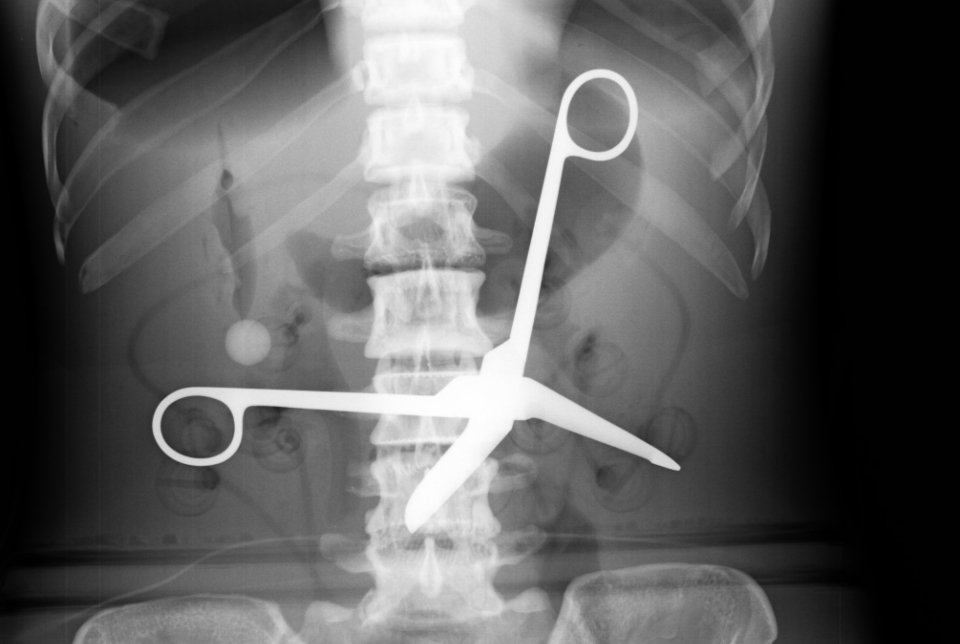Part 1
Medical negligence claims can involve various types of issues.
One issue that frequently arises in such claims is whether or not a doctor’s failure to diagnose and treat their patient’s injury or illness was negligent and if so, whether that negligence caused the patient to experience pain and suffering or financial/economic losses which could have been prevented with earlier diagnosis and appropriate treatment.

Image Reference
Not many personal injury claims go to trial however in the last 2 years there have been at least 2 ‘delayed diagnosis’ medical negligence claims decided in Australia.
Although both cases were decided interstate, the legal principles involved in assessing whether there has been negligence, and whether such negligence resulted in a loss, are similar in each State and Territory of Australia.
The most recent of these cases is a decision of the Court of Appeal in Western Australia, delivered in January 2017:
East Metropolitan Health Service & South Metropolitan Health Service v Martin
[2017] WASCA 7
Medical Care
In 2012, Mr Martin, aged 60 years, was experiencing problems with his back and on 20 November 2012 he was taken to the Emergency Department of Armadale Hospital where he was diagnosed with septic arthritis of the L5/S1 facet joint of the spine.
On 23 November 2012 he was taken to theatre for the insertion of a catheter line via his arm, at or about the crook of the elbow, so that he could be treated with antibiotics. The attempts to insert the catheter line in each arm were unsuccessful. Mr Martin gave evidence at trial that the attempted insertion into his right arm was very painful. In fact a further attempt was abandoned because of the amount of pain it caused.
Mr Martin was still complaining about right arm pain 2 days later, on 25 November 2012. By this time he had also started to experience tingling in the fingers of his right hand.
On 1, 2 and 3 December he continued to complain of symptoms in his right hand and fingers, including numbness, tingling and difficulty with fine motor skills and grip strength.
Despite a probable nerve problem being documented in his medical records, his symptoms were not investigated and he was discharged home on 6 December 2012.
Between 7 and 23 December 2012 Mr Martin visited the clinic at Fremantle Hospital on 4 occasions and a nurse came to his house every day. He continued to report pain to the nurse and was prescribed medication.
On 19 December 2012 he underwent an EMG which showed median nerve palsy and he was referred to the plastic surgery department where he was seen by a plastic surgeon, on 10 January 2013.
The Injury
On 24 January 2013 he underwent an ultrasound of his right forearm which identified a large haematoma in the forearm immediately adjacent to the brachial artery and compressing the adjacent vein and median nerve.
Surgery was performed to remove the haematoma and decompress the right median nerve on 28 February 2013.
Up until the surgery on 28 February 2013, Mr Martin suffered from constant pain in his right arm. Although the surgery successfully reduced the pain in his hand, he was still left with limited movement, discomfort, required hand therapy twice a week and was unable to drive.
Mr Martin’s hand problems impacted on his ability to return to work as a Lecturer in telecommunications and cabling. He could not carry out demonstrations, hold or cut cables or manage the whiteboard, nor could he mark assessments. He tried to work in August and September 2013 but then ceased employment.
He was assessed to have a 29% permanent hand impairment with limited pinch grip strength, diminished sensation, difficulty with activities requiring use of both hands and fine motor control and difficulty driving a manual motor vehicle.
Mr Martin commenced legal action against both Armadale Hospital and Fremantle Hospital, the employers of the medical staff who had treated him.
Negligence
The trial judge was satisfied, based on the expert medical evidence, that the haematoma found by ultrasound on 24 January 2013 was caused by the failed insertion of the catheter line 23 November 2012.
Mr Martin did not allege that the catheter was negligently inserted, rather that the hospital staff were negligent in failing to arrange for him to undergo an ultrasound prior to 24 January 2013 given the symptoms he was experiencing.
The Trial Judge found that there was an abundance of evidence that by 4 December 2012 investigations ought to have been carried out, involving at least an ultrasound, given the potential for nerve damage if left untreated.
Causation
The trial judge also concluded, on the balance of probabilities, that if surgery had been performed sooner, probably by 6 or 7 December 2012, Mr Martin would not have suffered any permanent disability to his hand.
(The expert evidence at trial was that compression of the median nerve causes loss of nutrients and that compression for sufficient time causes irreparable damage).
Mr Martin was therefore awarded compensation for his permanent hand injury.
The Appeal
The hospital appealed the decision of the trial judge.
They challenged the findings on negligence, causation and the assessment of damages.
Part 2 here
We have experienced medical negligence solicitors at Lindbloms Lawyers that are happy to meet with you and discuss your claim. Call 8357 7611 to make an appointment.